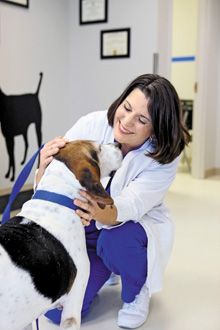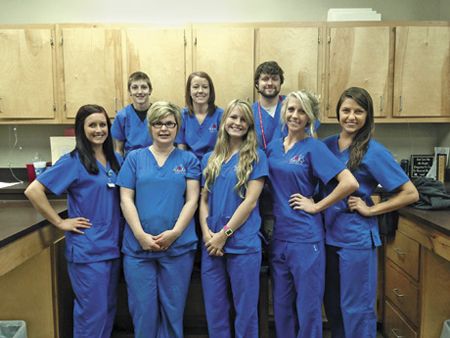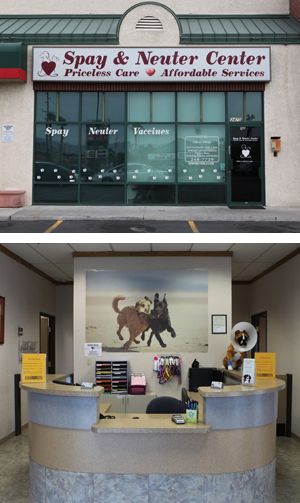For-profit spay-neuter clinics seek to fill niche
But owners still battle resistance from veterinary colleagues in the community.
As pet owners have struggled to pay for their pets' healthcare, the veterinary market has seen a blossoming of low-cost spay and neuter clinics. Many are nonprofit programs that have drawn fire and even been challenged by law in some states. But for-profit spay and neuter clinics seek to find a middle ground-providing a reasonably priced service that provides enough revenue to support the business and its owner.
But many of these for-profit spay and neuter clinics are finding themselves the target of traditional veterinary practices who are defending the cost of their services to price-conscious pet owners.
For this article, dvm360 talked to leaders at three for-profit spay and neuter clinics who discussed their business models and how they've worked to win clients and work cooperatively with other veterinarians in the community.
Working with the working class

Dr. Danielle Rastetter, owner of Pets In Stitches in Miamisburg, Ohio. Photo courtesy of Dr. Danielle Rastetter.Danielle Rastetter, DVM, owner and chief veterinarian at Pets In Stitches in Miamisburg, Ohio, worked for a nonprofit shelter for five years before striking out on her own. The shelter's services were based on financial need, but Rastetter says there were still too many pet owners left in the middle.
“I felt the community still had a population of people that didn't qualify for the need-based assistance but still needed help,” she says.
With the help of her husband and his business management degree, along with support from her local small business association, Rastetter opened her practice in 2011. While the practice is still in a “growth phase,” Rastetter says she can now pay her husband a practice manager salary and employ a full-time registered veterinary technician, a full-time front office assistant, a part-time veterinary assistant and a part-time disease control aid. She's still working on paying herself a salary.
In addition to providing low-cost services at her practice, Rastetter works with area shelters, often getting referrals from them for pet owners who don't qualify for need-based assistance.
When she first opened, Rastetter says, her business plan called for 25 to 30 patients per day. But the current average is 11. “I didn't really expect how many clients would come in and purchase additional services,” she says. “When we get to full growth we will probably get to 22 per day.”
Rastetter says she needs to perform 15 sterilizations per day to meet her overhead in the practice. To meet her own personal expenses, however, she works as a relief veterinarian and with a local mobile vaccination clinic.
She has never had a personal confrontation with another veterinarian about her low-cost practice, but Rastetter says clients have relayed negative comments from other veterinary professionals who imply that her practice offers a lower standard of care.
Rastetter says she tries to counter anything negative she hears with a positive response. “I work very hard at collecting testimonials and encouraging clients to post on review sites,” she says. “So someone looking us up is going to run into a lot of positive things.”
Rastetter also has been very careful not to encroach on the business of the local veterinary community, keeping her services limited. She offers vaccines, heartworm and microchipping under the umbrella of spay-neuter, but she refers clients to traditional clinics for booster shots or any other services.
“I want our local veterinary community to feel as though we're not stepping on their toes in that way,” Rastetter says.
In return, some local veterinarians send her cases. In fact, two nearby veterinarians send her all their spay and neuter cases. Rastetter says she performs some complicated sterilizations for practices who believe she has the expertise-an opinion not shared by all. People are used to auxiliary services in human medicine but not veterinary medicine, she explains.
“They ask us, ‘Is it a real veterinarian doing the surgery?' They're worried because they're not used to this,” she says. “With time and continued positive feedback, we'll become more known and more accepted.”
Occasionally, Rastetter sees other issues requiring veterinary care while performing a sterilization. In those cases she refers the client to another veterinarian or, if she takes care of the problem during the sterilization, she keeps the regular veterinarian informed every step of the way.
“We're trying to make this affordable for the community and encourage full-service relationships,” she says.
New practice, old problems
Wesley Taylor, practice manager at Mercy Animal Hospital in Gardendale, Alabama, says his clinic has heard from many traditional veterinarians who ask how they can afford to offer their services for such a low cost.
“The biggest issue we have is those who have questioned whether or not the services we're offering at the spay-neuter clinic are the best medicine or best practices,” Taylor says.
In reality, he says, there is no variation between the service offered at his clinic and what clients would get at a traditional practice. “A lot of people chalk up rates to their standard of care,” he says. “So we try to put as much information out there about the differences. The procedure doesn't change.” The cost savings at his clinic come from low overhead and specialization in one service, he adds.
The spay-neuter clinic is affiliated with a traditional full-service veterinary hospital. Since it opened Oct. 6, business has tripled, he says-but the number of sterilizations at the traditional clinic has not changed. Many clients at the low-cost clinic are new clients or existing clients who had put off sterilization because of the cost.
The clinic now performs 10 to 15 sterilizations per day, four days per week. The goal is to do 80 per week, but Taylor says the clinic can meet its overhead with four cases per day. The clinic employs one full-time veterinarian, a full-time veterinary technician, two veterinary assistants and a full-time receptionist. A kennel assistant position has yet to be filled, and the clinic has room to double as business grows. Costs for a feline neuter start at $50, and service fees top out at $95 for a canine spay. The fees are all inclusive, including pain medication and any take-home medications, Taylor says.
In Alabama, Taylor adds, nonprofit spay and neuter clinics are facing shutdown from the state, and there are only six practices left that specialize in these services. Alabama is a contentious environment for these clinics, with the state veterinary medical association and practice owners association battling over low-cost services.
“We're not in it for any greedy purposes,” Taylor says. “This is an issue that needs to be address, and we want to address it.”
The clinic targets pet owners obtaining animals from rescues and shelters and gives patrons of those organizations a 25 percent discount. Exceptionally large shelter organizations can receive a discount of up to 50 percent. “If we're not actively working to adjust the program and making it affordable, then it's a hindrance rather than a help,” Taylor says.

The team at Mercy Animal Hospital in Gardendale, Alabama, keeps a lid on costs through the practice's low overhead and focus on providing just one specialized service. Photo courtesy of Wesley Taylor.
A changed career and a new perspective

Dr. Taryn Griffith, owner of Spay-Neuter Las Vegas.Taryn Griffith, DVM, owner of Spay-Neuter Las Vegas, bought her practice two years ago. The founder, Melanie Brazil, DVM, started the clinic to combat a terrible pet overpopulation problem in Nevada. With few low-cost options and a law instituted in Clark County in 2009 that requires sterilization of every pet by the age of 4 months, Brazil recognized a great need.
Griffith says the law has been credited with a nearly 32 percent decline in euthanizations in Clark County, where one shelter alone sees more than 40,000 pets surrendered in a single year. “An integral part of that is having an option for people who want to do the right thing but who just can't afford it,” Griffith says.
Griffith, who worked for a decade in private practice before buying the spay and neuter clinic, says this isn't the career she imagined for herself.
“I never thought in a million years I would go into spay and neuter,” she says. “But so many people can't afford to take care of their pets and too many turn to euthanasia when it isn't warranted. It's frustrating. So I started looking for other options.”

Spay-Neuter Las Vegas was founded in 2009 after a local law was passed requiring that all pets be sterilized by 4 months old. Photos courtesy of Dr. Taryn Griffith.Griffith says she has found new purpose in battling pet overpopulation. “I felt in full service that I wasn't appreciated that much, and here a lot of the clients appreciate how we're helping them,” she says. “It's brought back that enjoyment of what I do.”
She says traditional veterinarians may sometimes feel like low-cost clinics are stealing from them. But many of the patients Griffith sees-even those who are 7 or 8 years old-have never been to a veterinarian before. “The majority of the clients we see would not be able to have their clients spayed or neutered if we didn't provide the service,” she says.
The practice gets referrals from vaccination clinics and shelters, and Griffith refers clients to full-service hospitals when needed. “We are not full-service veterinarians. We are not a substitute for a family doctor,” Griffith says. “The minute they get sick, we tell them they have to go to a full-service veterinarian.”
But as much as she tries to have a good rapport with the local veterinary community, her efforts haven't gone far, Griffith admits. Last year she sent letters to more than 50 local veterinarians explaining her desire to have a network of local providers to refer cases to. She asked for business cards and fliers to keep at her practice. Out of 50, only eight replied.
“Those eight were definitely appreciative and we refer back and forth,” Griffith says. But she laments the fact that more practices don't see the benefit of what her clinic could offer them.
“If full-service clinics changed their view of us they'd realize it could be a great partnership,” Griffith says. “It could be a great source of referrals for them.”
Griffith says her clients have been told by other veterinarians that she won't provide good care for their pets or give them pain medication, and that's why her costs are so low. But Griffith says her cost burden is lower because she doesn't have to keep all the medications and supplies on hand that a traditional practice does.
Her clinic employs two full-time veterinarians and performs 20 to 40 surgeries per day. She manages to cover all her costs, and the cheapest service is $40 for a feline neuter. Griffith doesn't plan for much growth, since she has no desire to feel rushed or overtaxed.
“We only have enough to feel we can get it done in a comfortable amount of time without feeling too rushed or fatigued,” Griffith says. “I know I'm never going get rich doing this. I don't want to book 80 surgeries per day and run my staff into the ground and make myself sore and tired.”
Griffith says she wishes traditional practices would view spay and neuter clinics as a complement rather than competition, much in the way primary care physicians refer cases to the OB/GYN. When it's all you do, you can do it well and efficiently, she says. Veterinarians have no problem referring cases to specialists for other matters, and Griffith says she doesn't understand the issue with spay and neuter clinics not falling under the same rules.
“We're going strong, we're not going anywhere,” Griffith says, adding that she believes more cities and counties will begin to pass sterilization laws similar to what was enacted in Clark County, making practices like hers a necessity. “This is the way of the future.”
Rachael Zimlich is a freelance writer who lives in Cleveland, Ohio. She is a former staff reporter for dvm360 magazine.
Episode 29: Using storytelling to retain and attract new veterinary clients
November 19th 2020On this episode of The Vet Blast Podcast, Adam Christman, DVM, MBA, is joined by Australian veterinarian, Phil Tucak, BSc, BVMS, who offers insight on the power of storytelling in marketing your veterinary practice.
Listen